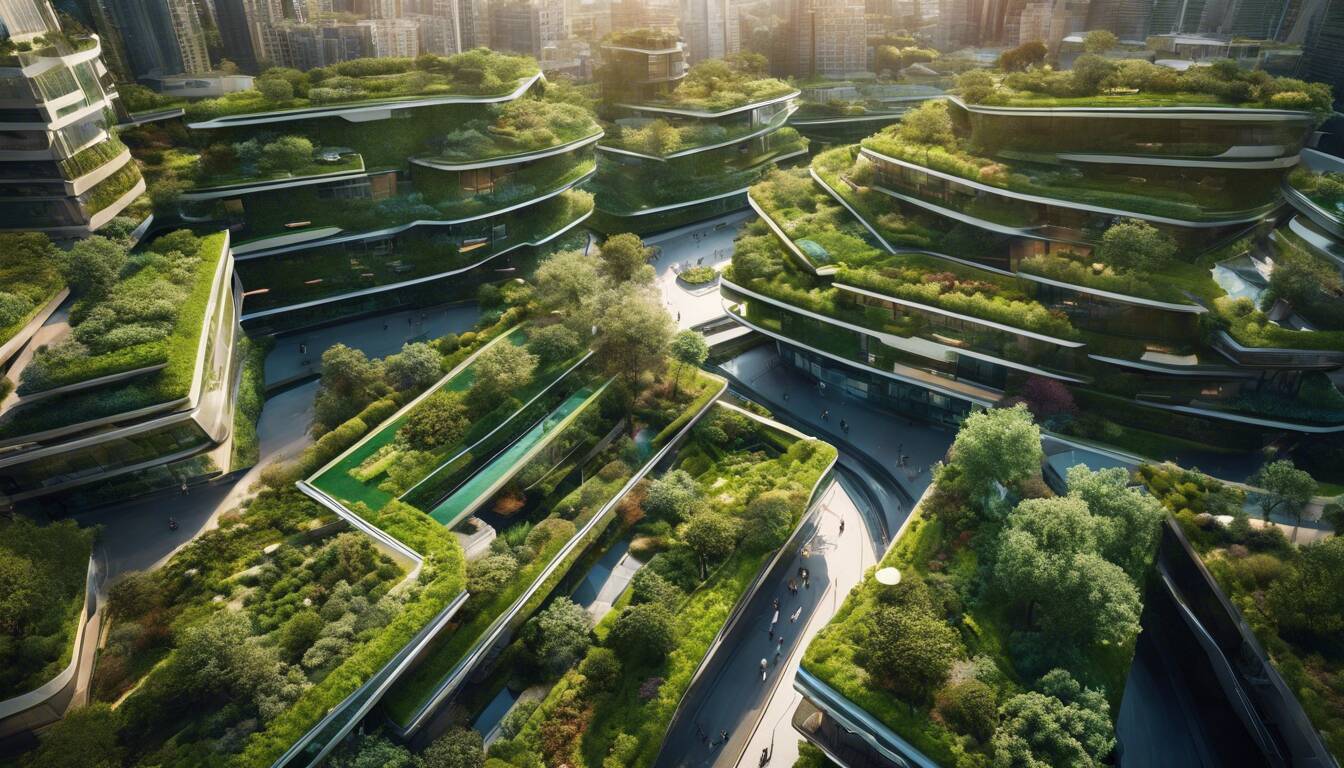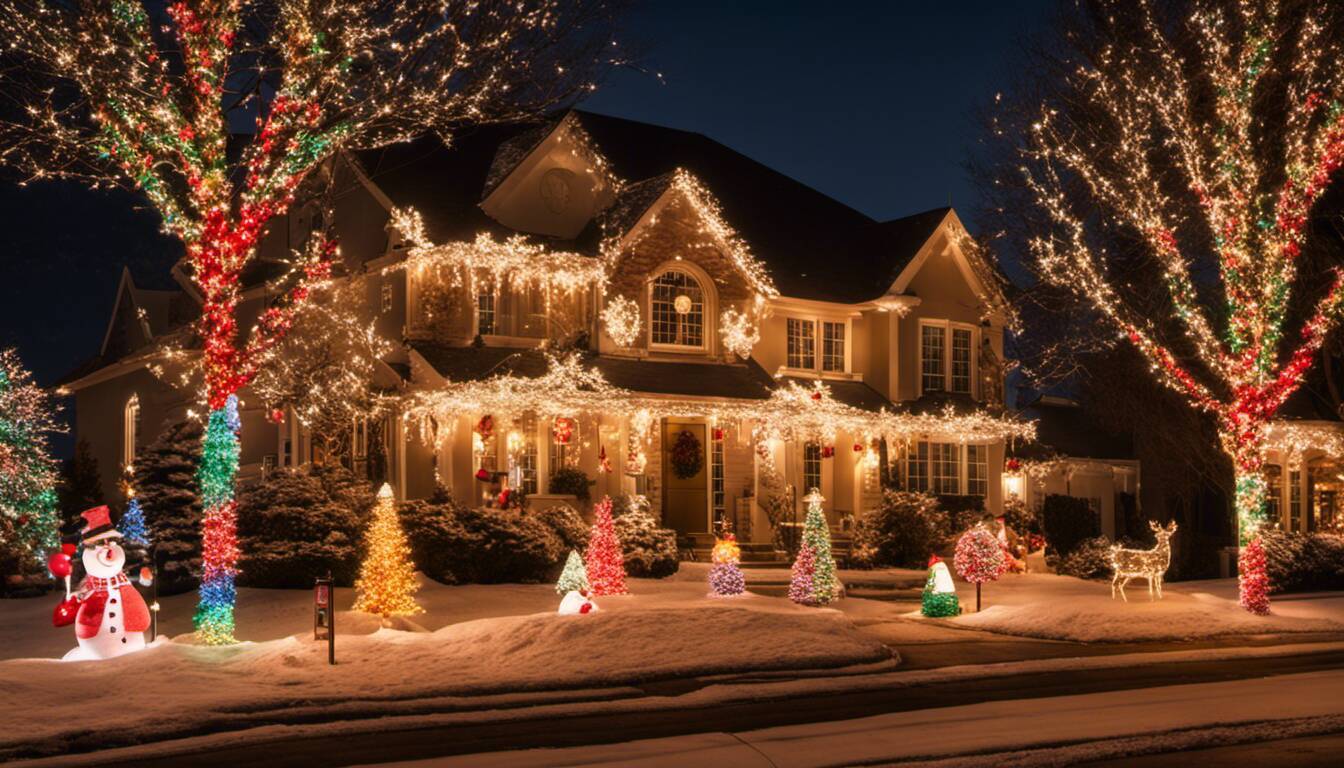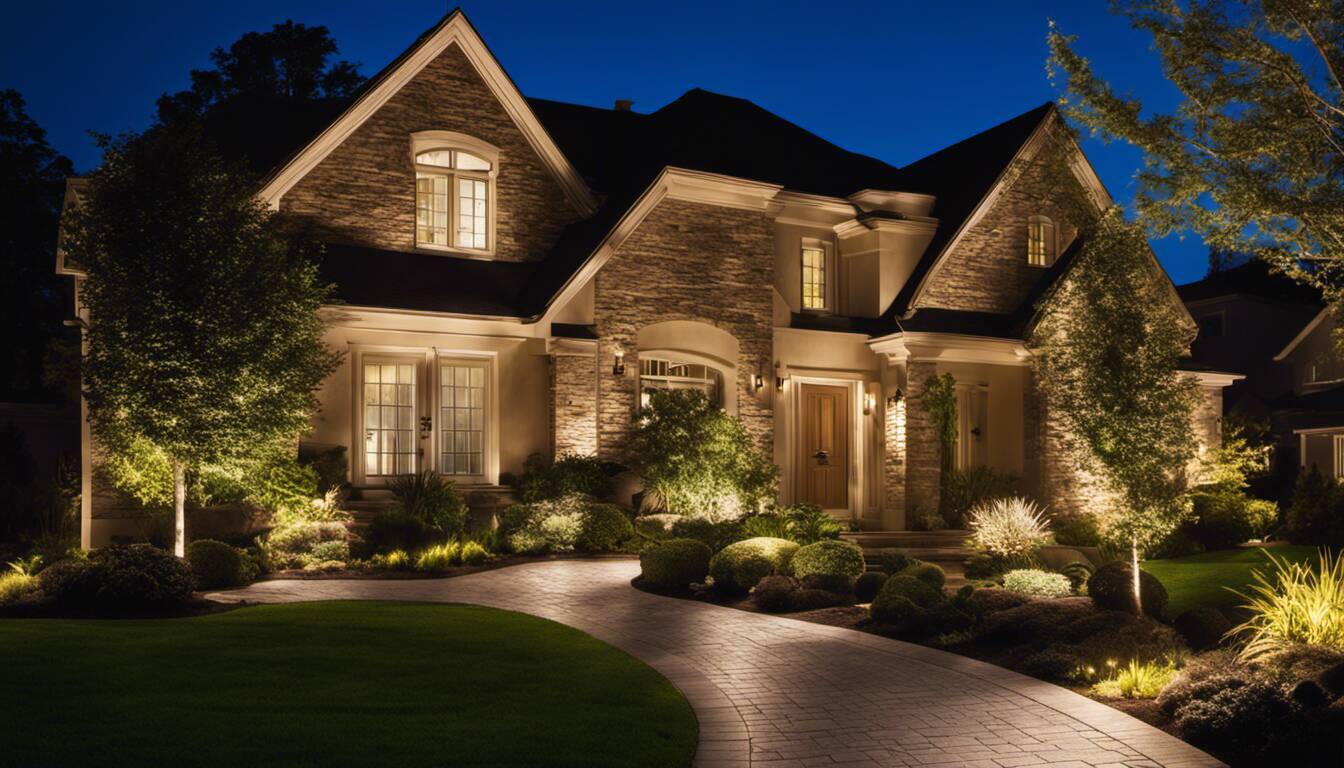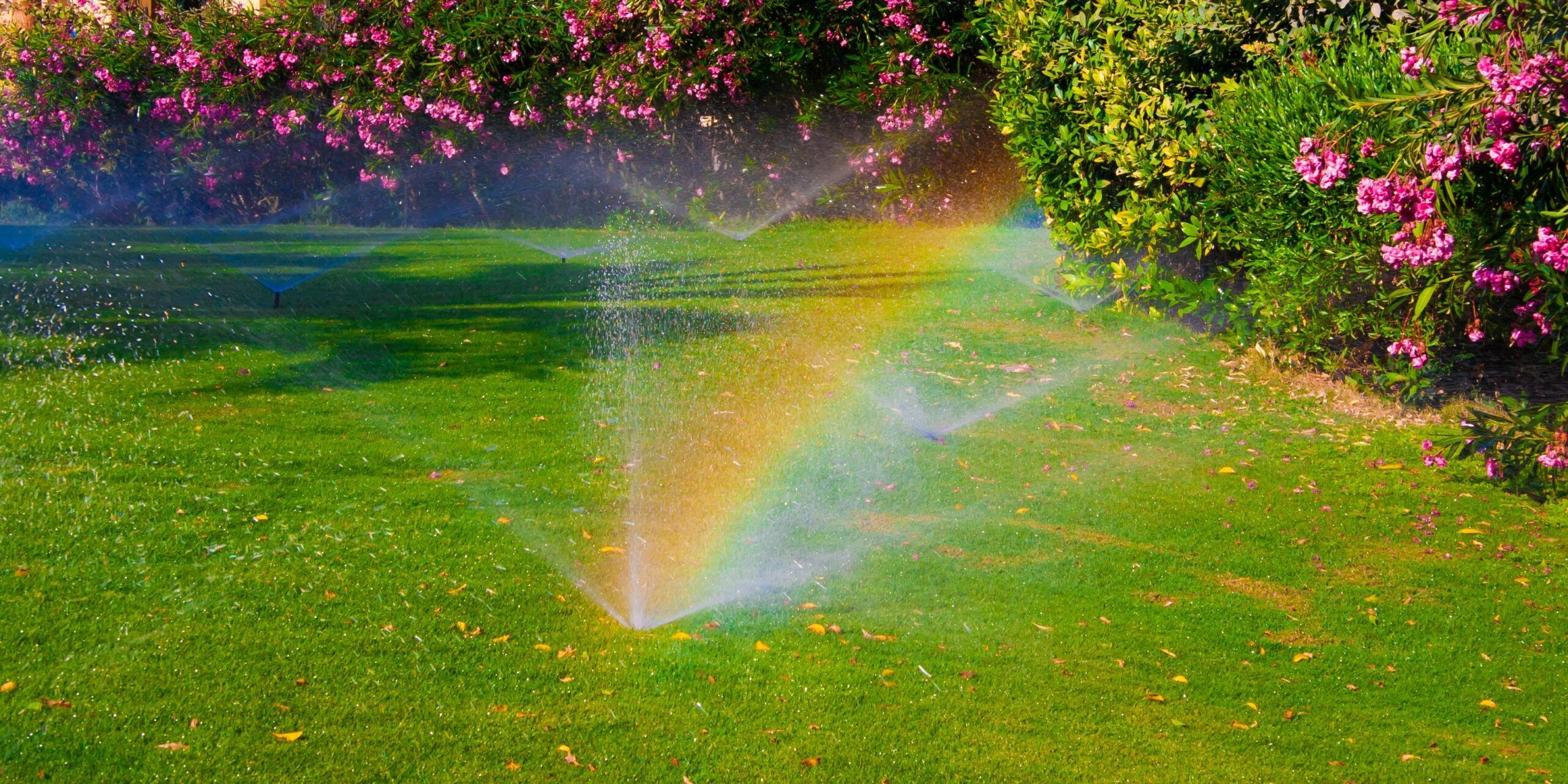
As we stride forth into 2024, landscape design is not immune to the rapid pace of innovation and change. Tech-infused gardens, climate-conscious layouts, and bio-diversity-boosting tactics are just tips of the design iceberg soaring into tomorrow’s horizon. Buckle up to explore the future of landscape design in our digitized, environmentally-aware era — where green thumbs meet touchscreen fingers and sustainability isn’t just nice-to-have; it’s a necessity. Witness the fresh bloom of 2024 trends and predictions that will redefine your idea of landscaping from an aesthetic indulgence to an ecological imperative.
Landscape design trends are changing with the times, and looking to 2024, we can predict some of the significant shifts that will take place. From innovative design techniques being incorporated into urban environments to natural, un-designed landscapes taking center stage in rural areas, landscape design has never looked so exciting. Today, we’re going to explore what you can expect from landscape design in 2024.
As homeowners and businesses alike become more conscious of their impact on the environment, sustainable practices are becoming more important in landscaping. The use of native plants and drought-resistant plants is increasing as people look for ways to reduce water usage while still creating beautiful outdoor spaces. In addition, recycled or repurposed materials are being used creatively in landscaping projects.
Another trend that has been emerging is the focus on wellness through nature. Green spaces and natural elements have been linked with reducing stress and improving mental health. As a result, this has led to an increased interest in incorporating fountains, water features, and other such elements into landscape designs.
Lastly, technology is likely to play a more significant role in landscape design come 2024. With newer technologies like augmented reality (AR), it is easier for designers to bring their ideas to life virtually before implementation.
In terms of style trends, two aesthetics stand out – naturalistic planting and contemporary styles.
Naturalistic planting involves using native plants and less manicured designs that promote sustainability, including perennials, grasses, and wildflowers, which limits the need for chemicals or excessive maintenance while providing beauty all year round due to an emphasis on hues found in nature. Gardens inspired by this aesthetic also tend to attract wildlife and pollinators — effectively creating self-sustaining ecosystems.
Contemporary landscape design takes a more modern approach toward outdoor spaces—incorporating clean lines, bold shapes, and a minimalist color palette. This approach is elegant, yet understated, while often emphasizing the modern appeal of urban environments.
Imagine a minimalist courtyard of concrete slabs with a single container garden at one corner. A contemporary landscape design like this style might incorporate rusted steel elements as focal points, creating an inviting contrast to the uniform and simple design.
An interesting development in recent years is how these two styles are being combined within landscape design projects. The result is a fusion that combines organic and man-made, adding layers of depth to outdoor space designs.
It’s like combining two paint colors, white and black, to create something new: gray – using different tones results in a unique outcome that cannot be accomplished using either alone.
Looking into 2024, it appears the demand for beautiful outdoor spaces will only continue to grow. Whether you’re looking for a naturalistic or contemporary aesthetic, choose what fits best for your lifestyle while keeping in mind sustainability and eco-consciousness.
The rise of urbanization has prompted an increased need for green spaces to offer a respite from the daily hustle and bustle. As such, innovative landscape designers throughout the world are focusing on creating lush and sustainable urban landscapes that serve as natural havens amidst cityscapes. With 2024 approaching fast, landscape design trends show that innovative concepts, designs, and techniques will blend with science to create even more breathtaking outdoor spaces than ever before.
That said, sustainability remains at the forefront of urban landscaping designs in 2024. The use of native plants that require less water, fertilizers, and maintenance will continue to dominate the industry. In addition, eco-friendly practices such as rainwater harvesting systems and xeriscaping – a landscaping technique that conserves watering using drought-resistant plants – will become more prevalent in future commercial and residential projects.
Let’s take Singapore as a prime example of urban landscaping innovation. It’s known for its Garden City initiative, which has transformed Singapore into a lush green oasis with many gardens integrated into public infrastructure. Its new plans include increasing the Green Plot Ratio to maximize plant cover and promotion of rooftop greenery to make use of unused space; this example inspires other cities worldwide to prioritize similar initiatives.
Devising ways to integrate landscapes into infrastructure is also gaining traction in several countries globally. As towns expand vertically—often at the expense of ground-level land– vertical gardens are popping up on walls or inside buildings. Moreover, some places use gardens such as rooftop farms for growing food in controlled environments.
Urban landscaping technology continues to advance with newer hardware & software components being developed alongside digital tools used for planning and execution.
Here are examples of advanced technology which are being used extensively in contemporary landscaping:
| Technology | Benefit |
|---|---|
| Drones | Precision landscape mapping and irrigation optimization |
| 3D Printing | Customizable function elements in landscaping design |
| Augmented Reality (AR) technology | Visualize finished landscapes before any on-ground work begins |
From feasibility study to execution, landscapers utilize these technologies to create designs that will be sustainable, healthy, ecological, efficient, and cost-effective. These advancements have enabled a more streamlined landscaping process with increased precision.
For instance, while the use of hydroponic systems and LED grow lights within urban settings isn’t new. They are gaining popularity due to their economical use of space, water, and energy while being able to produce fresh produce on site.
The application of 3D printing also presents exciting possibilities within landscape design—the technology can cater to customizations that don’t follow straight-line mechanics, for instance integrating or creating aesthetically pleasing benches and light poles that blend well with the surrounding landscape on demand.
With the world’s population set to touch 9.7 billion by 2050, the emphasis on eco-friendly solutions is unavoidable. The landscape industry is no different as it seeks ways to incorporate sustainable methods into its designs while reducing carbon footprint. As scientists predict more frequent and prolonged heatwaves due to climate change, artificial climate control in outdoor spaces will become an integral part of landscape design. Technologies like misting systems, shade sails, and plant-based solutions will help counteract rising temperatures.
Another significant greenhouse gas emitter that landscape designers can tackle is gasoline-powered equipment. More companies are ditching the outdated technology for electric counterparts to minimize noise pollution and reduce emissions. These tools are quieter, less expensive, and emit low decibels compared to their gas-guzzling peers.
Furthermore, rainwater harvesting systems and drip irrigation have become increasingly popular as eco-conscious homeowners see the appeal in reusing natural resources while saving money in the long-run. Drought-resistant plants like succulents and Mediterranean greens are trendy choices as they require minimal watering.
It’s apparent we deal with adverse climatic changes every day; hence incorporating sustainable practices in landscape design has never been more vital.
Hardscaping refers to all of those elements that aren’t plant life – think patios, walkways, boulders, fire pits, retaining walls – anything that solidifies the garden’s footprint. In 2024, updated hardscaping trends have moved away from uniform flooring and instead are focused on incorporating texture and scale into hardscape design.
For instance, instead of regular flat pavers on a patio area, you might see slabs of natural stone laid together to form the space. Boulders can be used as borders for beds or have cutouts placed within them for vents or lighting.
The trend of indoor-outdoor living is also going strong, influenced by the desire for more extended outdoor stays and the lack of socialization options for much of 2020 and beyond. Designers have been incorporating elements like custom built-in seating, outdoor kitchens, fireplaces, and televisions into backyard spaces. The trend is aesthetically pleasing and functional as it provides a space to entertain small gatherings when inside locations might not be viable.
In addition to hardscaping, decor trends for 2024 focus on creating an ambiance in outdoor spaces that reflect personal style while considering practicality. Modular raised beds made from recycled materials are perfect for planting seasonal vegetables. Tech-enabled furniture like heated outdoor furniture will continue to grow in popularity allowing you to enjoy outdoor living even in colder months.
Think of it as bringing the comfort and luxury of your interior space outdoors.
One unexpected addition that may rise in demand is artwork outside – not just sculptures but elaborate wall designs that can add depth and texture to yard spaces.
As climate change becomes an increasingly pressing issue globally, it comes as no surprise that sustainability has become a top priority for landscape designers. The industry is shifting from creating merely aesthetically pleasing landscapes towards cultivating environments that are ecologically responsible and sustainable.
Sustainable landscaping aims to create healthier, more environmentally friendly spaces that limit their impact on the planet through the incorporation of recycled materials, water conservation techniques and the use of native plants. It is a rethinking of our gardens, including how they’re designed and cared for.
While it’s easy to consider plant selection as the primary factor when creating sustainable landscapes, is choosing materials that reduce waste and pollution equally important?
Absolutely – various sustainable materials are gaining popularity within the landscape design industry. For example, permeable hardscaping such as porous pavers allows water to penetrate the ground below, fewer pollutants from runoff. Choosing recycled materials like tires or old plastic bottles can also cut down on the need for natural resources and reduce waste in landfills.
With sustainability at the forefront of landscape design in 2024, let’s dive deeper into the specific concepts currently trending among designers.
Illuminate your landscape’s future with custom outdoor lighting from Johnson Irrigation and Outdoor Lighting as we unveil the 2024 trends and predictions; dial 318-218-2222 to bring a tailored radiance to your outdoor space, merging aesthetics with ecological consciousness.




Shreveport, LA 71106
COPYRIGHT © 2021 – 2023 JOHNSON IRRIGATION AND LIGHTING. ALL RIGHTS RESERVED | PRIVACY POLICY | TERMS & CONDITIONS